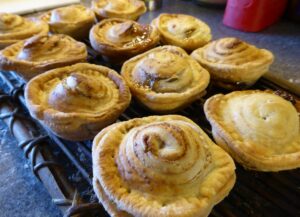
I much enjoyed the recent session on Archaeology and Fiction at TAG (the Theoretical Archaeology Group conference). Discussion was stimulated by a variety of papers from archaeological authors, illustrators, playwrights and poets – among others.
I attempted to look at the nature of truth in archaeological writing. I’m not the first to do this, it is an old conundrum that we rarely appreciate just how much imagination we use when we interpret the data that we are so highly trained to collect. And, of course, we can also question the objective nature of that data: the eye of the beholder and all that! I don’t think it does any harm to revisit this debate; it helps us to remain humble about the so-called academic wisdom that we all wish to produce.
It struck me how much our values have changed. As a profession I think we can be quite snobby about the ‘value’ of archaeological novels as opposed to archaeological textbooks. Yet I’d lay a wager that the novels reach a larger audience. One of the things I do for a living is to read the works of aspiring novelists and provide guidance on the archaeological settings and data that they use. Occasionally fellow archaeologists have been quite surprised at this, and yet, if we do not take the time to work with those who popularize the results of archaeology, then we certainly have no right to question their final output. Not everyone writes novels that I’d read out of choice, but everyone has an audience and everyone has the right to publish. The past is not for archaeologists to guard. If our academic texts are not immediately user friendly then we have a duty to help out.
It is interesting that in the past we gave status to storytellers, those who constructed stories to inform us about the world around us. In recent centuries this has lessened. We have diminished the didactic power of fiction and increased the distance between fiction and fact (look at the relative values of ‘academic’ papers and ‘popular’ writings in the recent REF evaluation of universities). It is salutary to realise that they used to be one and the same.
Academic narrative is no more factual just because it is academic than popular narrative is fictional just because it is popular. Archaeological fact is indeed the foundation of all interpretation whether academic or popular but it is what we do with it that matters. It is just the springboard for what must follow and without interpretation it is sterile. That interpretation is the job of the storyteller (for which read illustrator, game-maker, film producer and so on).
Excavation can give us a bowl. It can even give us traces of cornflakes. But it requires interpretation (and imagination) to combine them into breakfast. And even more imagination to communicate to others the significance of that breakfast to the people who ate it.
Whatever breakfasts your Yuletide rituals demand – I hope you have a merry time and a well-earned break over the next couple of weeks.

You must be logged in to post a comment.